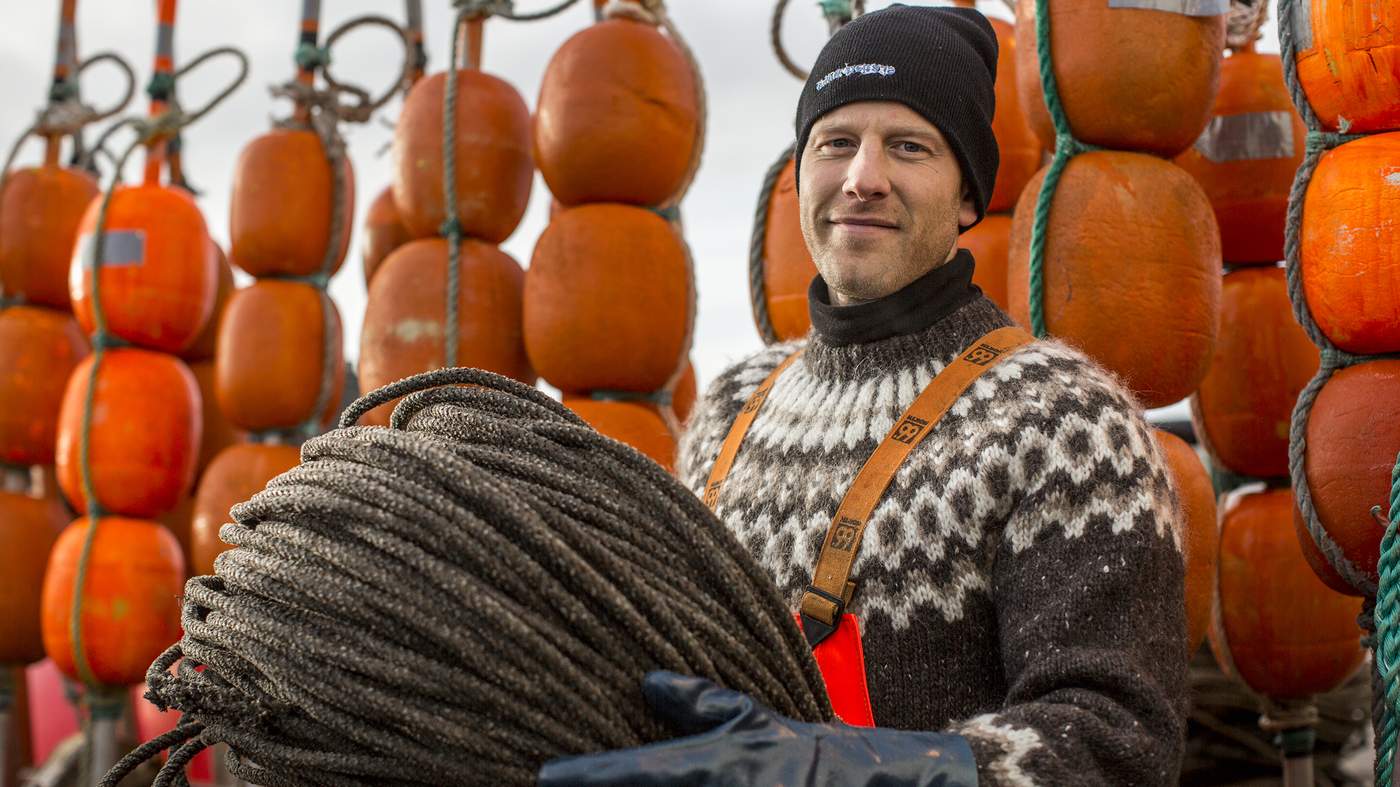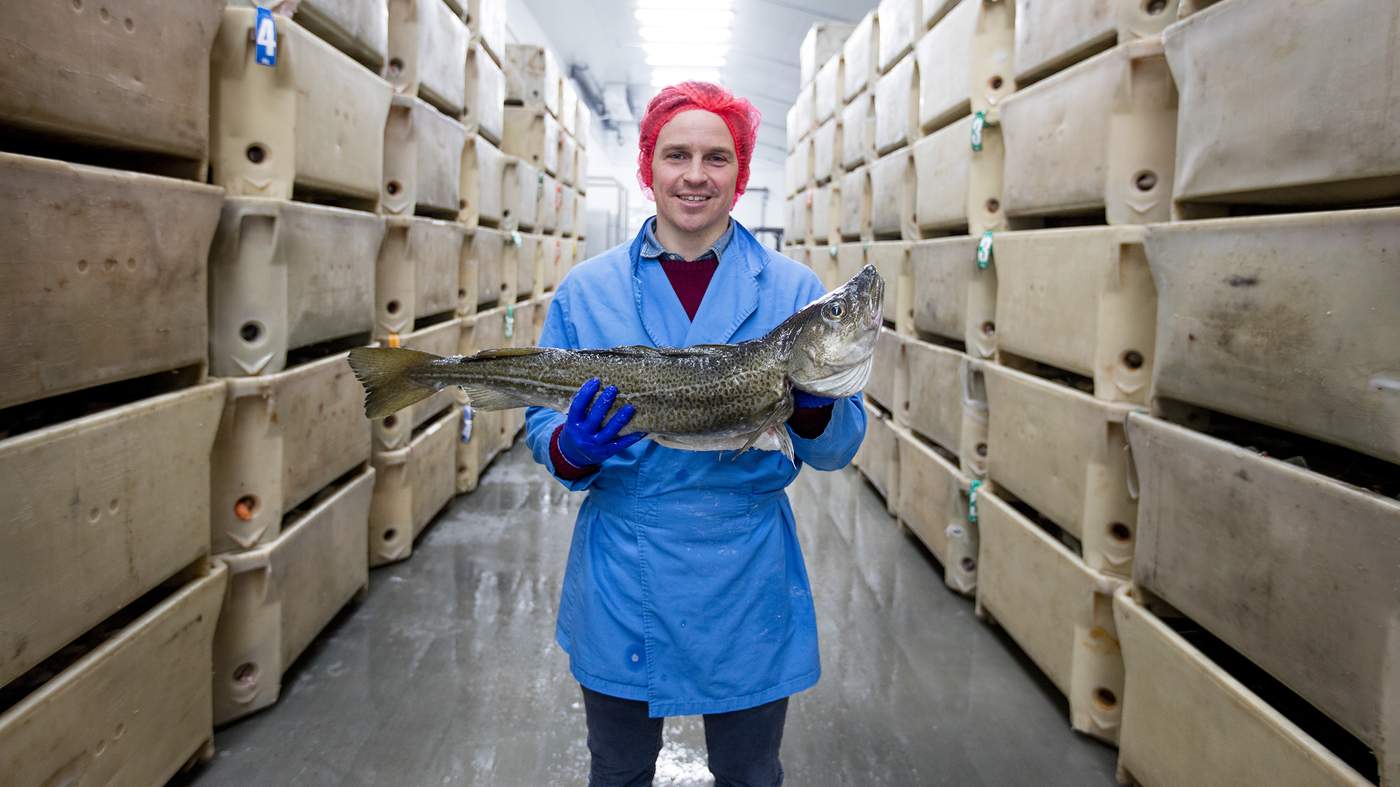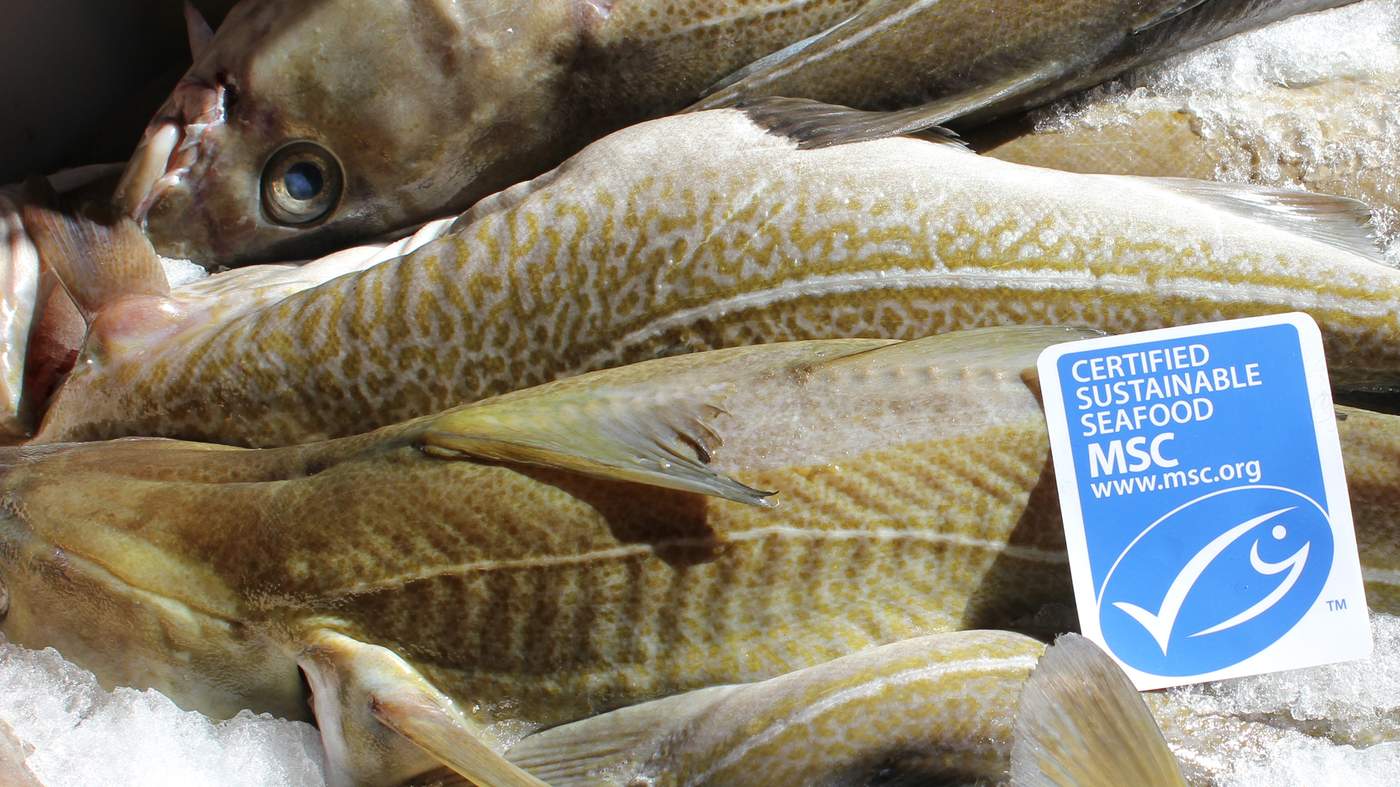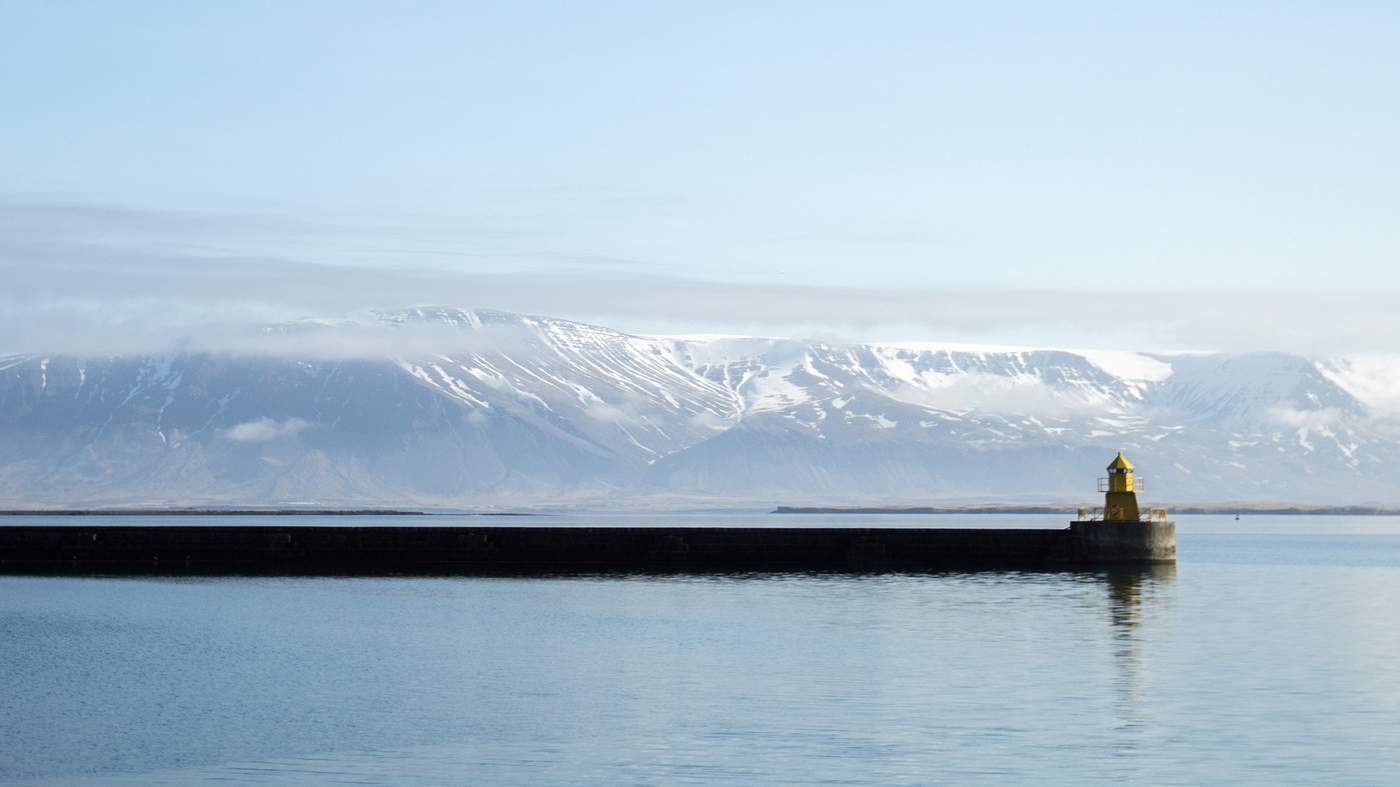As long as people have lived in Iceland, they’ve harvested the bounty of the sea.
Iceland’s first inhabitants brought with them a seafaring way of life which, along with the island's pristine environment and rich fishing grounds, has allowed them to prosper. Today fishing remains one of Iceland’s main sources of income - and pride.
By the end of World War II, Iceland was one of the wealthiest and most developed nations in the world. But, in an increasingly global market, holding onto this hard-won prosperity has required the country to adopt a new, more considered approach to the way it manages its fishing resources.
"Many good men gave their lives for what we have today."
Pétur Hafsteinn Pálsson is general manager of Visir, a family-owned fishing and processing company based in Grindavik, south west Iceland.
For a man responsible for one of Iceland’s most successful longline fleets, Pétur is surprisingly humble.
“My name should have been Sighvatur, after my grandfather”, says Pétur. “But my father had a very good friend, a skipper, who died aged 24 saving his crew. So I have his name – Pétur Hafsteinn.
“My father never talked much about it or his feelings...
Perhaps because he also lost his father and uncle at sea when he was just twelve. But when I was at navigation school, I met Pétur Hafsteinn's son, Kristján. We ended up at the same school, just like our fathers.”
Pétur hears from Kristján from time to time. He used to receive birthday cards from his grandmother. But it’s the story of Pétur’s grandfather, Pall Jónsson which has had the biggest influence on his life.
In 1956, Pétur’s father Páll Pálsson bought his first fishing boat at the age of 25 with the intention of building a legacy to his father. The boat sank in a fishing accident in 1964. The crew survived and with the insurance money, Páll and his wife brought Visir, the company which Pétur and his family still own today.
“When I asked my father what happened next, he just used to say ‘we started fishing and processing and we’ve been doing that ever since’. That’s all.
Everyone knows that when you have salt in your blood, that’s it, you just keep fishing.”
But Pétur’s family has been doing a lot more than fishing.
Visir celebrated its fiftieth birthday in 2015. As part of one of the world’s most well managed fisheries, it has transformed itself into a thoroughly modern business, informed by data and technology.
Visir’s new factory turns out 500 portions of fresh fish per minute – the equivalent to between 15,000 to 20,000 individual fish per day. Scanning machines and water jet cutting ensure no bones are left in the fine white fillets. The efficient staff carefully trim and pack the portions. They break every two hours for 30 minutes, enjoying fresh offcuts from the day’s catch for lunch.
Visir's product of fresh, frozen and salted cod and ling supplies customers throughout Europe and North America. Looking at the sheer volume of the catch, you’d be forgiven for thinking the supply from Iceland’s waters was endless. But it hasn’t always been this way.
The collapse of the herring stocks in the 1960s lead to high unemployment.
The Icelandic government, looking to diversify the economy and reduce dependence on fishing, invested heavily in other resources such as aluminium. It also introduced Iceland’s Fisheries Management Act, and in 1983 set quotas for the catch of fish in its waters.
These quotas, informed by scientific research, set the amount of fish (by weight) that each company can catch. Quotas can be traded and sold between companies, but the total amount caught per year cannot exceed the government target.
The quota system was controversial at first, but has ultimately led to more profitable, efficient and environmentally sound fishing.
“You have two ways to control fishing. The first is time: If you have one day, what do you do? You catch as much as you can on that day.
The second is the amount of fish you can catch: If you’re told you can only catch 10 tonnes it changes your entire way of thinking. You start to think 'how little oil can I use? How few vessels can I catch it with?'
The next year, if your quota doesn’t increase, but the stock goes up, the catch rate goes up and you can catch more fish in less time. This is what’s now happening in Iceland.”
Embracing science
Quotas are set based on advice from the Marine Research Institute. Their researchers visit Visir regularly to collect samples. As well as measuring and weighing the fish, they sample otoliths (a small bone from inside a fish's head which grows throughout its life) to work out their age.
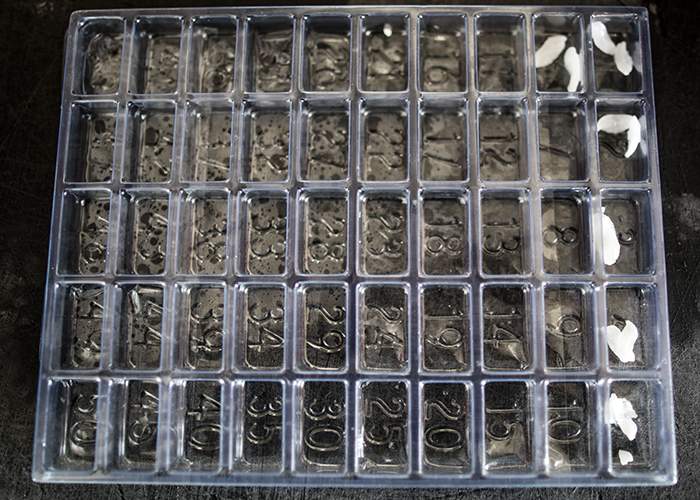
Otoliths, collected to age fish stocks
This data, together with that collected by fishing boats and research vessels, is used to determine the health of the fish population and therefore the amount which can be fished safely without causing the stock to decline.
Despite fish never being far from politics in Iceland, the government abides closely to scientific advice when setting quotas. And as stocks recover, they have been able to slowly and carefully increase the amount that can be caught.
"Fishing is my life's work."
Ólafur Óskarsson, captain of the Johanna Gisladottir, Visir’s largest boat, named after Pétur’s grandmother, has been a fisherman since he was 16. He’s just returned to Grindavik after four days at sea. His boat is laden with cod and ling.

Ólafur's job is increasingly high-tech: a bank of computer screens show his location, the sea floor, water temperature and weather. He can access 15 years of data from previous fishing trips and see the weight of his catch in real time. Below deck CCTV keeps an eye on the machinery and seven crew members.
Ólafur is careful to operate within the boundaries set by the government to ensure sustainable fishing. At the moment (mid-April) fishing areas up to 12 miles out to sea are closed to allow fish to spawn.
He avoids areas with coral and an underwater 'mountain' in order not to damage habitats and to prevent the fishing line from becoming tangled. There can also be rapid closures of areas if there are a lot of small fish in the catch. But this happens very rarely now as the health of the stock has improved and fish are bigger than they used to be.
“Sustainable fishing is fundamental. I want to be a fisherman tomorrow and for the next generations to be able to take over. This is our livelihood, so it’s important to fish the right quantity.”
One of Visir’s main products is salted cod and ling – known as bacalhau. Bacalhau is traditionally eaten in Mediterranean countries, and also popular in Brazil. There is high demand for quality products which, preserved in salt, can be kept for many years.
To create a traditional bacalhau, a butterflied cod fillet is first soaked in brine for 24 hours. It’s then coated in salt and allowed to cure for 21 days before being packaged and shipped to market.
Before it can be cooked and eaten, the bacalhau must be soaked in fresh water (with a ratio of roughly two parts water to one part fish), and the water changed every 24 hours for four days.
Bacalhau is traditionally eaten at Christmas and shared by the whole family. During the peak season (September to March) Visir alone sends six shipping containers full of bacalhau to Spain, Italy and Greece every week.
At Rio 2016 salted cod will be served as Bolinhos de Bacalhau, salted cod croquettes traditional to Brazil and Portugal.
“Sustainable fishing is the biggest market issue you can get.
When selling our fish, the first question we’re asked now is: ‘Is your fish sustainable?’
If the answer is no, then business is off. It’s fundamentally important to have a sustainable fishery because we are working to supply markets that demand it. If you don’t have it, you don’t have any business.”
Photograph: Sigridur Olafsdottir, supervisor at Visir, packs MSC certified cod fillets ready for transport to Europe.

